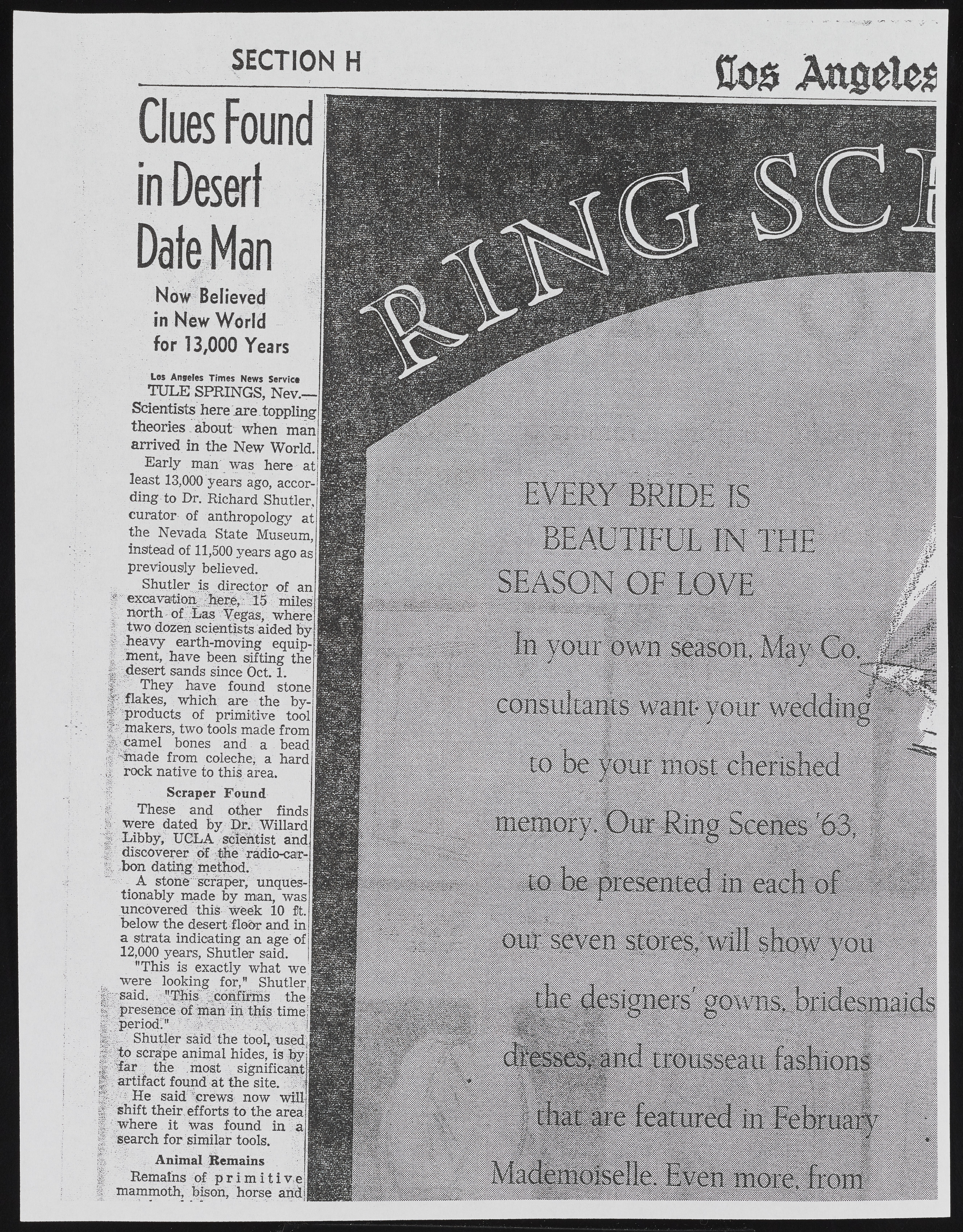Copyright & Fair-use Agreement
UNLV Special Collections provides copies of materials to facilitate private study, scholarship, or research. Material not in the public domain may be used according to fair use of copyrighted materials as defined by copyright law. Please cite us.
Please note that UNLV may not own the copyright to these materials and cannot provide permission to publish or distribute materials when UNLV is not the copyright holder. The user is solely responsible for determining the copyright status of materials and obtaining permission to use material from the copyright holder and for determining whether any permissions relating to any other rights are necessary for the intended use, and for obtaining all required permissions beyond that allowed by fair use.
Read more about our reproduction and use policy.
I agree.Information
Digital ID
Permalink
Details
More Info
Rights
Digital Provenance
Publisher
Transcription
SECTION H A n g o l a in New World for 13,000 Years Los Angeles Tim es News Service TULE SPRINGS, Nev.- theories L about when man arrived in the New World. Early man was here at least 13,000 years ago, according to Dr. Richard Shutler, curator of anthropology at the Nevada State Museum, instead of 11,500 years ago as previously believed. Shutler is director of an | north of ;Eas | two dozen scientists aided by | heavy earth-moving equip- | inent, have been sifting the desert sands since Oct. 1. ] They have found stone ^ flakes, which are the by-f products of primitive tool |; .makers, two tools made from i camel bones and a bead | /4tiade from coleche, a hard | rock native to this area. Scraper Found These and other finds 1 were dated by Dr.; Willard 1 Libby, UCLA scl^Stist and discoverer | bon datingMethod; IA stone scraper, unquestionably made by man, was uncovered this week 10 ft. below the desert f loOr and in a strata indicating an age of 12,000 years, Shutler said. ’’This is exactly what we were looking for,” Shutler, • said. .;- ? the presence period^” j§§ Shutpr said the tool, used, ;|to scrape animal hides, is p y ^far. the most significant | artifact found at the site. SI He said prew s now will shift their efforts to the area where it was found in a search for similar tools. Animal Remains Remains of p r i m i t i v e j mammoth, bison, horse andi

